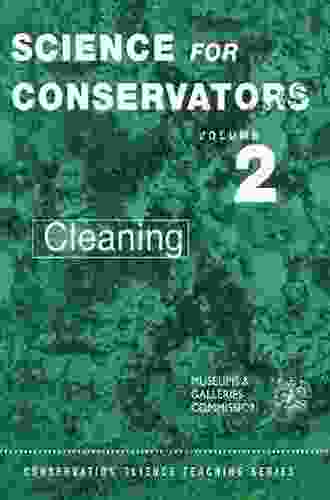Doing Mental Health Research With Children And Adolescents

Mental health disorders are a significant public health concern among children and adolescents, affecting their overall well-being, academic performance, and social functioning. Research plays a crucial role in understanding these disorders, developing effective interventions, and informing policy decisions. However, conducting mental health research with children and adolescents presents unique challenges and ethical considerations that researchers must carefully navigate.
4 out of 5
| Language | : | English |
| File size | : | 12987 KB |
| Text-to-Speech | : | Enabled |
| Screen Reader | : | Supported |
| Enhanced typesetting | : | Enabled |
| Word Wise | : | Enabled |
| Print length | : | 294 pages |
Challenges
1. Obtaining Informed Consent and Assent: Children and adolescents are often considered a vulnerable population, and obtaining their informed consent is paramount. Researchers must provide age-appropriate information about the study, its purpose, and potential risks and benefits. Children below a certain age may not be able to fully comprehend this information, so obtaining assent (agreement) from both the child and their legal guardian is recommended.
2. Ensuring Confidentiality and Privacy: Mental health information is highly sensitive, and protecting the confidentiality and privacy of participants is crucial. Researchers must establish clear policies to ensure that data is securely stored, only accessed by authorized personnel, and anonymized or de-identified when shared.
3. Managing Power Dynamics and Stigma: Power dynamics between researchers and participants can influence the research process. Children and adolescents may feel intimidated or hesitant to share sensitive information with adults. Researchers must create a safe and supportive environment, free from stigma or judgment, to encourage open and honest responses.
4. Language and Cognitive Development: Children and adolescents have different language and cognitive abilities compared to adults. Researchers must use age-appropriate language and ensure that research instruments are tailored to their developmental level. This may involve using simplified language, shorter sentences, and concrete examples.
Ethical Considerations
1. Respect for Autonomy: Researchers must respect the autonomy of children and adolescents by providing them with information and involving them in decision-making processes to the extent possible. This includes obtaining their consent or assent and acknowledging their right to withdraw from the study at any time.
2. Beneficence and Non-Maleficence: The primary ethical principle of research is to do no harm (non-maleficence) and to maximize potential benefits (beneficence). Researchers must carefully consider the potential risks and benefits of the study and ensure that the benefits outweigh the risks.
3. Justice and Equity: Mental health research should be conducted in a fair and equitable manner, ensuring that all eligible participants have an equal opportunity to participate, regardless of their background or characteristics. Researchers should actively work to address barriers to participation and promote inclusivity.
Best Practices
1. Recruitment and Sampling: Effective recruitment strategies are essential to reach a representative sample of children and adolescents. Researchers should consider using multiple methods, such as school-based recruitment, community outreach, and online platforms.
2. Data Collection Methods: A variety of data collection methods can be used, including interviews, questionnaires, focus groups, and observations. Researchers should choose methods that are age-appropriate, culturally sensitive, and minimize the burden on participants.
3. Data Interpretation and Dissemination: Researchers must carefully interpret their findings and consider the potential implications for policy and practice. They should also disseminate their findings in a responsible and ethical manner, ensuring that the privacy and confidentiality of participants are maintained.
4. Advocacy and Action: Mental health research can be used to inform advocacy efforts and promote policy changes that improve the mental well-being of children and adolescents. Researchers can engage in advocacy activities, such as presenting their findings to policymakers, writing op-eds, or collaborating with advocacy organizations.
Conducting mental health research with children and adolescents requires a thoughtful and ethical approach that balances the need for scientific rigor with the protection of vulnerable participants. By addressing the challenges, adhering to ethical considerations, and employing best practices, researchers can contribute to a better understanding of mental health in childhood and adolescence and ultimately improve the lives of young people.
4 out of 5
| Language | : | English |
| File size | : | 12987 KB |
| Text-to-Speech | : | Enabled |
| Screen Reader | : | Supported |
| Enhanced typesetting | : | Enabled |
| Word Wise | : | Enabled |
| Print length | : | 294 pages |
Do you want to contribute by writing guest posts on this blog?
Please contact us and send us a resume of previous articles that you have written.
 Fiction
Fiction Non Fiction
Non Fiction Romance
Romance Mystery
Mystery Thriller
Thriller SciFi
SciFi Fantasy
Fantasy Horror
Horror Biography
Biography Selfhelp
Selfhelp Business
Business History
History Classics
Classics Poetry
Poetry Childrens
Childrens Young Adult
Young Adult Educational
Educational Cooking
Cooking Travel
Travel Lifestyle
Lifestyle Spirituality
Spirituality Health
Health Fitness
Fitness Technology
Technology Science
Science Arts
Arts Crafts
Crafts DIY
DIY Gardening
Gardening Petcare
Petcare Claudio De Castro
Claudio De Castro Barbara Klein
Barbara Klein James Diego Vigil
James Diego Vigil Caroline Porter Thomas
Caroline Porter Thomas Robert Mcentarffer
Robert Mcentarffer Bookrags Com
Bookrags Com Natasha Preston
Natasha Preston David Beaupre
David Beaupre 6th Edition Kindle Edition
6th Edition Kindle Edition Jamaica Stevens
Jamaica Stevens L Madison
L Madison Dr Danny Penman
Dr Danny Penman Debra Pascali Bonaro
Debra Pascali Bonaro Kristi K Hoffman
Kristi K Hoffman Karen Myers
Karen Myers E Bruce Goldstein
E Bruce Goldstein John Hands
John Hands Joe Oliver
Joe Oliver Josh Mulvihill
Josh Mulvihill Sherry Monahan
Sherry Monahan Rowan Ricardo Phillips
Rowan Ricardo Phillips Gregory A Boyd
Gregory A Boyd Eva Feder Kittay
Eva Feder Kittay Freda Mcmanus
Freda Mcmanus Tami Lynn Kent
Tami Lynn Kent Clint Malarchuk
Clint Malarchuk Paul Deepan
Paul Deepan Sandra Mizumoto Posey
Sandra Mizumoto Posey Suzie Cooney
Suzie Cooney Pamela Adams
Pamela Adams J Morgan Mcgrady
J Morgan Mcgrady Jordan Ifueko
Jordan Ifueko Grant Thompson
Grant Thompson Thomas Wentworth Higginson
Thomas Wentworth Higginson Shelby Hailstone Law
Shelby Hailstone Law Paul Johnson
Paul Johnson Mark Hatmaker
Mark Hatmaker Allan Mundsack
Allan Mundsack Christopher Mcdougall
Christopher Mcdougall Neal Bascomb
Neal Bascomb Louis Liebenberg
Louis Liebenberg Lewis Henry Morgan
Lewis Henry Morgan Mike Tyson
Mike Tyson Alessa Ellefson
Alessa Ellefson J Michael Leger
J Michael Leger Oscar Wegner
Oscar Wegner 2005th Edition Kindle Edition
2005th Edition Kindle Edition Richard Bromfield
Richard Bromfield Josh Elster
Josh Elster Meik Wiking
Meik Wiking Oliver Theobald
Oliver Theobald Claire Sierra
Claire Sierra Chris Dietzel
Chris Dietzel Betty Crocker
Betty Crocker Claire Baker
Claire Baker Katie M John
Katie M John Brennan Barnard
Brennan Barnard Cynthia Bourgeault
Cynthia Bourgeault 3rd Edition Kindle Edition
3rd Edition Kindle Edition Tom Mchale
Tom Mchale Geri Ann Galanti
Geri Ann Galanti Vibrant Publishers
Vibrant Publishers Prerna Lal
Prerna Lal Juno Dawson
Juno Dawson Nate G Hilger
Nate G Hilger Evan Brashier
Evan Brashier Bruce Watson
Bruce Watson Dustyn Roberts
Dustyn Roberts Martin Mobraten
Martin Mobraten Jason Miller
Jason Miller Nikki Grimes
Nikki Grimes Karl Morris
Karl Morris Eric I Karchmer
Eric I Karchmer Mauricio Cabrini
Mauricio Cabrini Jeffrey A Greene
Jeffrey A Greene Michael Geheran
Michael Geheran Joseph Chilton Pearce
Joseph Chilton Pearce Bernard Cornwell
Bernard Cornwell Kekla Magoon
Kekla Magoon Elizabeth Sims
Elizabeth Sims Don Fink
Don Fink Jo Frost
Jo Frost Ernest Shackleton
Ernest Shackleton Greta Solomon
Greta Solomon Elizabeth Wenk
Elizabeth Wenk Dan Falk
Dan Falk Temple Grandin
Temple Grandin Dervla Murphy
Dervla Murphy John Gribbin
John Gribbin Thomas R Baechle
Thomas R Baechle Jim Burns
Jim Burns Alice Ginott
Alice Ginott Kerry Fraser
Kerry Fraser Laurie Forest
Laurie Forest Patricia Stevens
Patricia Stevens James D Long
James D Long Breanna Lam
Breanna Lam Justin Hammond
Justin Hammond 1st Ed 2016 Edition Kindle Edition
1st Ed 2016 Edition Kindle Edition Gregory Collins
Gregory Collins Leon Anderson
Leon Anderson Stephen P Anderson
Stephen P Anderson Lois Duncan
Lois Duncan Eric Haseltine
Eric Haseltine Kristine Setting Clark
Kristine Setting Clark Mark Brazil
Mark Brazil Christopher Lakeman
Christopher Lakeman Tok Hui Yeap Rd Csp Ld
Tok Hui Yeap Rd Csp Ld Michael Alvear
Michael Alvear Paul Martin
Paul Martin Jozef Nauta
Jozef Nauta Monica Sorrenson
Monica Sorrenson Donna M Mertens
Donna M Mertens Robert Pondiscio
Robert Pondiscio Pat Dorsey
Pat Dorsey Whit Honea
Whit Honea Yan Shen
Yan Shen 1st English Ed Edition Kindle Edition
1st English Ed Edition Kindle Edition Heather Demetrios
Heather Demetrios Susan Walker
Susan Walker Mimi Lemay
Mimi Lemay Jon Dunn
Jon Dunn Leslie Leyland Fields
Leslie Leyland Fields Jong Chul Ye
Jong Chul Ye Andrea Wulf
Andrea Wulf Michael S Gazzaniga
Michael S Gazzaniga Leonardo Trasande
Leonardo Trasande Dalai Lama
Dalai Lama Al Ford
Al Ford Gayle Jervis
Gayle Jervis Michaela Stith
Michaela Stith Roselyn Teukolsky
Roselyn Teukolsky David Cheng
David Cheng L Ulloque
L Ulloque Terrence Real
Terrence Real Jessica Shortall
Jessica Shortall Fata Ariu Levi
Fata Ariu Levi Tony Horton
Tony Horton Dan Blackburn
Dan Blackburn Nancy Keene
Nancy Keene Chris Stewart
Chris Stewart Kenny Casanova
Kenny Casanova Mitch Rubman
Mitch Rubman Jonathan Ross
Jonathan Ross Laura Bright
Laura Bright Diane Duane
Diane Duane Dave Gerr
Dave Gerr Dr Katayune Kaeni
Dr Katayune Kaeni Geoffrey West
Geoffrey West Z Justin Ren
Z Justin Ren Roger Gordon
Roger Gordon Patricia O Quinn
Patricia O Quinn Eric Dominy
Eric Dominy Margaret Littman
Margaret Littman Marie Louise Von Franz
Marie Louise Von Franz Daphne Adler
Daphne Adler Jacqueeia Ferguson
Jacqueeia Ferguson John Kreiter
John Kreiter Andy Charalambous
Andy Charalambous Aubrey Clayton
Aubrey Clayton Patrick Lange
Patrick Lange Andrew Shapland
Andrew Shapland John Coleman
John Coleman 006 Edition Kindle Edition
006 Edition Kindle Edition Filipe Masetti Leite
Filipe Masetti Leite Dinokids Press
Dinokids Press Eli Boschetto
Eli Boschetto Elaine Beaumont
Elaine Beaumont John Collins
John Collins Theris A Touhy
Theris A Touhy James Mcnicholas
James Mcnicholas Carol Stock Kranowitz
Carol Stock Kranowitz Mohamed Elgendy
Mohamed Elgendy Rashad Jennings
Rashad Jennings Lars Behnke
Lars Behnke Mei Fong
Mei Fong Terence N D Altroy
Terence N D Altroy Jamie Hand
Jamie Hand Bruno Latour
Bruno Latour Joseph E Garland
Joseph E Garland Chris Lehto
Chris Lehto Theresa Cheung
Theresa Cheung Robert S Mueller
Robert S Mueller 2nd Edition Kindle Edition
2nd Edition Kindle Edition Richard Ania
Richard Ania Kennedy Achille
Kennedy Achille Christoph Delp
Christoph Delp Lenora Ucko
Lenora Ucko Jacquetta Hawkes
Jacquetta Hawkes Liesbet Collaert
Liesbet Collaert George Pendle
George Pendle Shonna Slayton
Shonna Slayton Emily A Duncan
Emily A Duncan Naomi Scott
Naomi Scott Patrick E Mcgovern
Patrick E Mcgovern Tim R Wolf
Tim R Wolf Edward Rosenfeld
Edward Rosenfeld Erika Bornman
Erika Bornman Monte Burch
Monte Burch Wong Kiew Kit
Wong Kiew Kit Charles Seife
Charles Seife Andrew Weber
Andrew Weber David Kushner
David Kushner G I Gurdjieff
G I Gurdjieff Jasmine Greene
Jasmine Greene Frank Sargeant
Frank Sargeant David Simkins
David Simkins Nnedi Okorafor
Nnedi Okorafor Raymond Buckland
Raymond Buckland Ziemowit Wojciechowski
Ziemowit Wojciechowski Elizabeth D Hutchison
Elizabeth D Hutchison Sloane Mcclain
Sloane Mcclain Raymond H Thompson
Raymond H Thompson Alden Jones
Alden Jones Manhattan Prep
Manhattan Prep Lee Smolin
Lee Smolin Steve Kantner
Steve Kantner Kerri Maniscalco
Kerri Maniscalco Andrew Maraniss
Andrew Maraniss Brooklyn James
Brooklyn James Tracy Gharbo
Tracy Gharbo Billie Jean King
Billie Jean King Glenn N Levine
Glenn N Levine Robert Ferguson
Robert Ferguson Edyta Roszko
Edyta Roszko Justine Brooks Froelker
Justine Brooks Froelker A C Grayling
A C Grayling Dan Wingreen
Dan Wingreen Sheryl Crow
Sheryl Crow Rifujin Na Magonote
Rifujin Na Magonote George W E Nickelsburg
George W E Nickelsburg Gail Craswell
Gail Craswell Jeremy Desilva
Jeremy Desilva Andre Norton
Andre Norton Patrick Viafore
Patrick Viafore Peter Wohlleben
Peter Wohlleben Steve Garnett
Steve Garnett Louis Stanislaw
Louis Stanislaw Broccoli Lion
Broccoli Lion Herbert Feigl
Herbert Feigl Robert Bauval
Robert Bauval Bob Welch
Bob Welch Michael Clarke
Michael Clarke Emma Dalton
Emma Dalton Starley Talbott
Starley Talbott Melissa Cheyney
Melissa Cheyney Emma Lord
Emma Lord Amy Chua
Amy Chua Miranda Castro
Miranda Castro William A Dembski
William A Dembski Sadie Radinsky
Sadie Radinsky Michael W Ford
Michael W Ford Tony Hernandez Pumarejo
Tony Hernandez Pumarejo Amy Ogle
Amy Ogle Robert Venditti
Robert Venditti Jean Clottes
Jean Clottes Bernard Rosner
Bernard Rosner Kelly Slater
Kelly Slater Joe Chilson
Joe Chilson Peter Dewhurst
Peter Dewhurst L S Boos
L S Boos 1st Edition Kindle Edition
1st Edition Kindle Edition Edward Frenkel
Edward Frenkel Simon G Thompson
Simon G Thompson Robert A Johnson
Robert A Johnson Hong Chen
Hong Chen Mary H K Choi
Mary H K Choi William Regal
William Regal Jay Cassell
Jay Cassell Jay Wilkinson
Jay Wilkinson 7th Edition Kindle Edition
7th Edition Kindle Edition Howard Mudd
Howard Mudd Brian Kent
Brian Kent Jenifer Fox
Jenifer Fox Bobby Blair
Bobby Blair Chris Froome
Chris Froome Lucas Whitecotton
Lucas Whitecotton Tasha Dunn
Tasha Dunn David Lloyd Kilmer
David Lloyd Kilmer Gianni La Forza
Gianni La Forza Tyler Vanderweele
Tyler Vanderweele Justin Bower
Justin Bower Chase Williams
Chase Williams Nadav Snir
Nadav Snir Sam Irwin
Sam Irwin Theodor W Adorno
Theodor W Adorno Patrick Hunt
Patrick Hunt Micah Goodman
Micah Goodman Mark V Wiley
Mark V Wiley Robert K Tyson
Robert K Tyson Lin Pardey
Lin Pardey Dr Brenda Stratton
Dr Brenda Stratton Janet Sasson Edgette
Janet Sasson Edgette Debra Barnes
Debra Barnes Skye Genaro
Skye Genaro Naomi Feil
Naomi Feil Miko Flohr
Miko Flohr Peter Cossins
Peter Cossins Susan E Cayleff
Susan E Cayleff Janetti Marotta
Janetti Marotta 8th Edition Kindle Edition
8th Edition Kindle Edition Linda A Roussel
Linda A Roussel Jack M Bloom
Jack M Bloom 3rd Ed Edition Kindle Edition
3rd Ed Edition Kindle Edition Lareina Rule
Lareina Rule Andrew G Marshall
Andrew G Marshall Brenda Dehaan
Brenda Dehaan Jason Curtis
Jason Curtis Ben Egginton
Ben Egginton John A Yoegel
John A Yoegel 4th Edition Kindle Edition With Audio Video
4th Edition Kindle Edition With Audio Video Carl J Sindermann
Carl J Sindermann Sam Goulden
Sam Goulden Mark Gregston
Mark Gregston Natalie Smith
Natalie Smith Stewart Smith
Stewart Smith Kevin Paul
Kevin Paul Tom Lyons
Tom Lyons Lesli Richards
Lesli Richards Icon Digital Publishing
Icon Digital Publishing A C Davison
A C Davison Subsequent Edition Kindle Edition
Subsequent Edition Kindle Edition 2012th Edition Kindle Edition
2012th Edition Kindle Edition Bill Reif
Bill Reif Manuel De La Cruz
Manuel De La Cruz Christa Orecchio
Christa Orecchio Syougo Kinugasa
Syougo Kinugasa Harry Middleton
Harry Middleton Marty Bartholomew
Marty Bartholomew A Christine Harris
A Christine Harris Bryan Smith
Bryan Smith 4th Edition Kindle Edition
4th Edition Kindle Edition Gregory J Privitera
Gregory J Privitera Deepak Chopra
Deepak Chopra Kate Usher
Kate Usher Cindy Kennedy
Cindy Kennedy Richard Adams
Richard Adams Gina Rae La Cerva
Gina Rae La Cerva Katie J Trent
Katie J Trent Keith Siragusa
Keith Siragusa Marisha Pessl
Marisha Pessl John Gookin
John Gookin Dominik Hartmann
Dominik Hartmann Ricki E Kantrowitz
Ricki E Kantrowitz Alan Jacobs
Alan Jacobs Samantha Lovely
Samantha Lovely Kelly Skeen
Kelly Skeen A Digger Stolz
A Digger Stolz Ellen Sue Turner
Ellen Sue Turner Patricia Moore Pastides
Patricia Moore Pastides Bree Moore
Bree Moore Maureen Johnson
Maureen Johnson Jeff Gill
Jeff Gill Olszewski Marie Erin
Olszewski Marie Erin Jiichi Watanabe
Jiichi Watanabe Alec Crawford
Alec Crawford Garrett Grolemund
Garrett Grolemund Steven D Levitt
Steven D Levitt Seymour Simon
Seymour Simon Diamond Wilson
Diamond Wilson Heather Job
Heather Job P G Maxwell Stuart
P G Maxwell Stuart Tom Pyszczynski
Tom Pyszczynski Nathalie Dupree
Nathalie Dupree Andrew Collins
Andrew Collins J D Salinger
J D Salinger Kate Spencer
Kate Spencer Riddleland
Riddleland Jd Brown
Jd Brown 50minutos Es
50minutos Es Deanne Howell
Deanne Howell Robert Peter Gale
Robert Peter Gale Kristen Riecke
Kristen Riecke Michael Romano
Michael Romano Ellen Levitt
Ellen Levitt Duy Tran
Duy Tran Porter Fox
Porter Fox Jillian Dodd
Jillian Dodd Max Domi
Max Domi Anthony Arvanitakis
Anthony Arvanitakis Brian Thompson
Brian Thompson Bertolt Brecht
Bertolt Brecht Rick Gurnsey
Rick Gurnsey Sarah Templeton
Sarah Templeton John Iceland
John Iceland Buddy Martin
Buddy Martin Christy Jordan
Christy Jordan Elizabeth Bradfield
Elizabeth Bradfield Terence Grieder
Terence Grieder Steve Magness
Steve Magness 5th Edition Kindle Edition
5th Edition Kindle Edition John Green
John Green Justin Doyle
Justin Doyle Stefan Hofer
Stefan Hofer Bonnie Scott
Bonnie Scott Joe Cuhaj
Joe Cuhaj Gary S Thorpe
Gary S Thorpe 50minutes Com
50minutes Com Theodore X O Connell
Theodore X O Connell Kyla Stone
Kyla Stone Nick Winkelman
Nick Winkelman Barnett Rich
Barnett Rich Ulla Sarmiento
Ulla Sarmiento Martha Menchaca
Martha Menchaca Chris I Naylor
Chris I Naylor Apsley Cherry Garrard
Apsley Cherry Garrard Collins Gcse
Collins Gcse Patricia S Potter Efron
Patricia S Potter Efron Leigh Calvez
Leigh Calvez Iris Bohnet
Iris Bohnet Adam Silvera
Adam Silvera A R Bernard
A R Bernard Robert Thurston
Robert Thurston Russell Miller
Russell Miller Marcia Verduin
Marcia Verduin Greg Midland
Greg Midland Eloise Jarvis Mcgraw
Eloise Jarvis Mcgraw Jasper Godwin Ridley
Jasper Godwin Ridley Cassandra Johnson
Cassandra Johnson Gershon Ben Keren
Gershon Ben Keren Lj Rivers
Lj Rivers Muata Ashby
Muata Ashby Nathan Jendrick
Nathan Jendrick Leonard Pellman
Leonard Pellman Heather Rain Mazen Korbmacher
Heather Rain Mazen Korbmacher Aly Madhavji
Aly Madhavji
Light bulbAdvertise smarter! Our strategic ad space ensures maximum exposure. Reserve your spot today!

 Arthur C. ClarkeNeverworld Wake by Marisha Pessl: A Haunting and Complex Literary Thriller
Arthur C. ClarkeNeverworld Wake by Marisha Pessl: A Haunting and Complex Literary Thriller
 Mason PowellUnveiling the Sealed Mysteries of Lin Pardey: A Journey into Adventure and...
Mason PowellUnveiling the Sealed Mysteries of Lin Pardey: A Journey into Adventure and... Kendall WardFollow ·4.5k
Kendall WardFollow ·4.5k Harold PowellFollow ·4.9k
Harold PowellFollow ·4.9k Brennan BlairFollow ·18.7k
Brennan BlairFollow ·18.7k Scott ParkerFollow ·10.9k
Scott ParkerFollow ·10.9k Carlos FuentesFollow ·13.4k
Carlos FuentesFollow ·13.4k Reed MitchellFollow ·14.6k
Reed MitchellFollow ·14.6k Michael SimmonsFollow ·10.4k
Michael SimmonsFollow ·10.4k Phil FosterFollow ·5.9k
Phil FosterFollow ·5.9k

 Finn Cox
Finn CoxA Comprehensive Guide for Budding Inventors and Backyard...
For those with a restless mind and a...

 Forrest Reed
Forrest ReedThe Ultimate Shopper's Guide to Purchasing Weight Lifting...
Are you looking...

 Dillon Hayes
Dillon HayesThe Chemical Choir: Unveiling the Enchanting Symphony of...
In the enigmatic realm of science, where...

 Ryūnosuke Akutagawa
Ryūnosuke AkutagawaStumbling Thru: Hike Your Own Hike
In the realm of outdoor adventures,...

 Terry Pratchett
Terry PratchettUnlock Your Math Skills: A Comprehensive Guide to Chenier...
Math plays a vital role in...
4 out of 5
| Language | : | English |
| File size | : | 12987 KB |
| Text-to-Speech | : | Enabled |
| Screen Reader | : | Supported |
| Enhanced typesetting | : | Enabled |
| Word Wise | : | Enabled |
| Print length | : | 294 pages |










